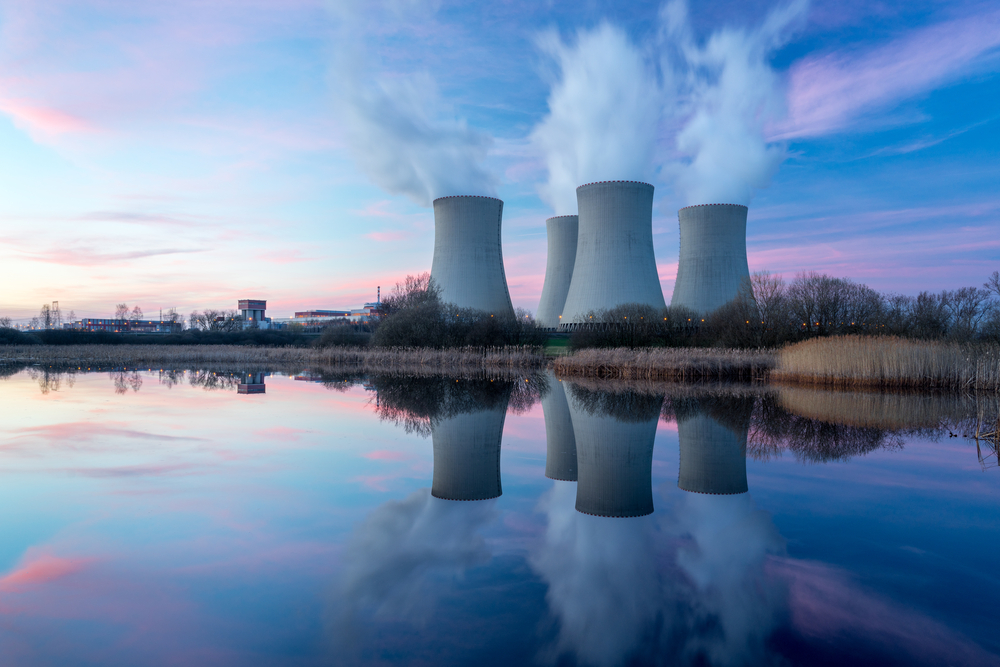
Nuclear energy is often overlooked as a viable green energy solution, with many people preferring more popular alternatives such as solar and wind. However, when it comes to providing clean, reliable and efficient energy, nuclear power has a lot to offer. In fact, nuclear energy may actually be better for the environment than solar and wind power, and here’s why.
Firstly, nuclear power is much more efficient than other green energy solutions. While solar and wind power rely on fluctuating weather patterns, nuclear energy is a constant source of energy that can operate 24/7, 365 days a year. According to the World Nuclear Association, nuclear power has a capacity factor of over 90%, meaning that it is consistently generating electricity at close to maximum output. In contrast, wind power has a capacity factor of around 40%, and solar power around 25%. This means that nuclear power can generate more energy per unit of installed capacity than either wind or solar power, making it a more efficient and reliable source of energy.
Advanced nuclear reactors can play a key role in cost-effective decarbonization of the national power sector, reliably supporting a high-renewables energy system. Updated, realistic cost assumptions and accurate operational characteristics reveal that advanced nuclear technologies provide high value for a clean electricity grid and possess significant market potential.
Secondly, nuclear power produces far less greenhouse gas emissions than other green energy solutions. While wind and solar power generate electricity without producing any direct greenhouse gas emissions, the manufacturing and transportation of wind turbines and solar panels can actually produce significant amounts of greenhouse gases. In addition, both solar and wind power require large amounts of land to generate significant amounts of energy, which can result in habitat destruction and land use conflicts.
Nuclear power, on the other hand, produces no greenhouse gas emissions during operation and requires much less land to generate the same amount of energy as wind and solar power. In fact, according to a study by the International Energy Agency, nuclear power produces around 15 times less greenhouse gas emissions per unit of electricity generated than wind power, and around 25 times less than solar power.
Thirdly, nuclear power is much more reliable than other green energy solutions. As mentioned earlier, nuclear power can operate consistently at maximum output, whereas wind and solar power are subject to weather conditions and often experience significant fluctuations in output. This means that nuclear power can provide a much more stable source of electricity, reducing the need for backup power from fossil fuel sources.
In addition, nuclear power is much more resilient to extreme weather events such as hurricanes and floods, which can damage wind turbines and solar panels. In contrast, nuclear power plants are designed to withstand a range of extreme weather events and are equipped with backup power systems to ensure uninterrupted operation.
Of course, nuclear power is not without its risks and challenges. There are concerns about the safety of nuclear power plants, the management of nuclear waste, and the potential for nuclear accidents. However, these risks can be mitigated through rigorous safety protocols, improved waste management practices, and the development of advanced nuclear technologies.
In conclusion, while solar and wind power have their advantages, nuclear power is a highly efficient, reliable, and environmentally friendly source of energy that deserves consideration as a green energy solution. With the development of advanced nuclear technologies such as small modular reactors and molten salt reactors, nuclear power has the potential to become an even more sustainable and cost-effective source of energy in the years to come.
Sources:
World Nuclear Association
International Energy Agency
Forbes
Scientific American

0 Comments